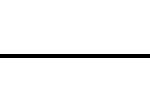The Mercedes-Benz E-Class has long been synonymous with luxury, performance, and German engineering. For enthusiasts and those in the market for a reliable and powerful sedan, the Mercedes 97 E420 often emerges as a particularly appealing model. Understanding its place in the E-Class lineage and what it offers is key to appreciating its appeal.
Transitioning to the W210: The 1997 E420 Emerges
Mercedes-Benz aficionados will recall the shift from the W124 chassis to the W210. While the W124 (models produced until 1995, including the 400E and E420) held a classic, boxy charm, the W210, introduced in 1996, marked a significant stylistic departure with its distinctive rounded headlights. Interestingly, 1996 saw no V8 option in the new W210 E-Class, with only the inline-six E320 available.
However, the year 1997 rectified this, bringing forth the mercedes 97 e420 within the W210 chassis. This model was significant as it reintroduced the V8 power to the newly designed E-Class.
Under the Hood: The M119 V8 Engine
The heart of the mercedes 97 e420 is the M119 V8 engine. This is a sophisticated piece of engineering – a quad-cam, 32-valve powerplant producing around 275 horsepower. Coupled with the then-new 722.6 five-speed automatic transmission, the mercedes 97 e420 offered a genuinely spirited driving experience. This combination provided both smooth cruising and ample power when needed, solidifying its position as a performance-oriented luxury sedan.
E420 vs. E430: A Sibling Rivalry
The mercedes 97 e420‘s reign was relatively short-lived in name. In 1998, Mercedes-Benz replaced the E420 with the E430. While fundamentally the same car in terms of chassis and overall design, the E430 featured the newer generation M113 V8 engine. The M113, while slightly less complex with two camshafts and 24 valves, maintained similar power output while offering improved fuel economy and reduced emissions.
For the average driver, the performance difference between the E420 and E430 is negligible. Both offer robust V8 power and a luxurious driving experience.
Reliability and Maintenance: What to Consider
Both the M119 and M113 engines are generally robust, but like any engine, they have their potential weak points. The M119 in the mercedes 97 e420 is known for potentially needing oil tube replacement over time, although this is not a catastrophic issue. The M113 in the later E430 can suffer from harmonic balancer failure, but this is a relatively straightforward and inexpensive repair if caught early.
In terms of general maintenance, the M113 in the E430 is often considered slightly less demanding, with longer service intervals and less frequent spark plug changes. This could translate to slightly lower long-term maintenance costs compared to the M119 in the mercedes 97 e420.
Conclusion: The Mercedes 97 E420 – A Compelling Choice
In conclusion, the mercedes 97 e420 represents a significant point in E-Class history, marking the return of V8 power to the newly styled W210 chassis. Equipped with the potent M119 engine and the smooth 722.6 transmission, it delivers a compelling blend of performance and luxury. While the later E430 offers a slightly more modern engine with potentially reduced maintenance, the mercedes 97 e420 remains a desirable and capable sedan for those seeking a V8 E-Class from this era. Both models offer a fantastic ownership experience, but the mercedes 97 e420 holds a unique position as the inaugural V8 of the W210 generation.
